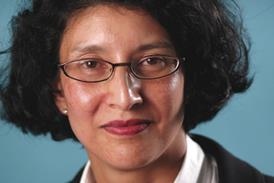ATP, Denmark’s largest pension fund and the fourth biggest in Europe, made a 5.8% return on its return-seeking investment portfolio before tax and expenses in the third quarter, due in large part to a profit on its private equity investment in payments business Nets.
This return for the quarter relative to the investment portfolio – which consists of ATP’s bonus potential and not its entire asset base – brought the year-to-date return to 12.3% at the end of September, from the 6.7% generated for the first six months of the year.
This nine-month return is slightly higher than the 11.6% return produced in the same period last year.
Carsten Stendevad, ATP’s chief executive, said: “We are delighted with how our investment portfolio has performed so far this year, with most asset classes performing strongly.”
While he said the year-to-date return was more than the pension fund had previously expected to achieve, he was less positive about the future.
“We do not expect these high returns to continue given the challenges that Europe, in particular, is facing with weak economic growth, an extreme monetary policy situation, where half of Europe’s government debt has negative interest rates, an under-capitalised financial sector, and the prospects of a hard Brexit,” Stendevad said.
ATP divides its assets into a huge hedging portfolio designed to back the pension guarantees it gives and a smaller investment portfolio that consists of its free reserves or bonus potential.
Returns achieved on ATP’s investment portfolio are not directly comparable with returns reported by most pension funds because of the leveraging effect the hedging portfolio assets can allow.
In the first nine months, ATP said in its release of interim results that the investment portfolio’s strong return was driven mainly by private equity, which contributed DKK5.3bn (€712m) of the portfolio’s DKK12.5bn return in absolute terms.
However, it said fixed income, credit, real estate and infrastructure had all made large positive contributions to the return.
On the other hand, the DKK3.7bn loss on long-term hedging strategies against inflation increases had pulled the result down.
ATP’s equity and debt investment in Nets, which held its initial public offering (IPO) in late September, contributed a profit of DKK1bn to third-quarter results, with DKK900m of that included in its private equity investment results and the rest categorised as credit.
Overall, however, ATP has now generated a return of DKK2.5bn out its original DKK3.6bn investment in Nets first made just over two years ago.
ATP reported it made an overall business loss in the first nine months of the year of DKK1.1bn, dipping into the red after the DKK9.9bn it set aside earlier this year to cater for an increase in life expectancy.
Total assets grew to DKK805.7bn at the end of September from DKK705.2bn at the end of December 2015, with the hedging portfolio standing at DKK705.6bn and the bonus potential at DKK100.1bn.












No comments yet